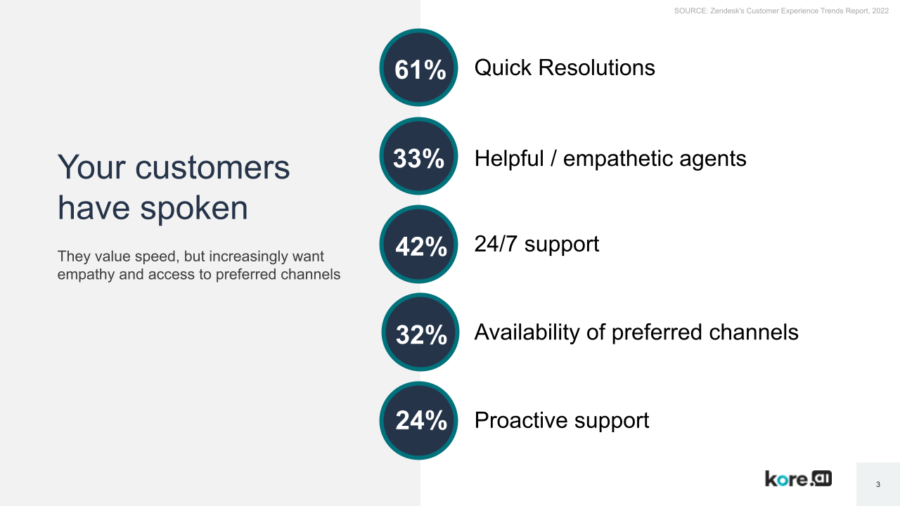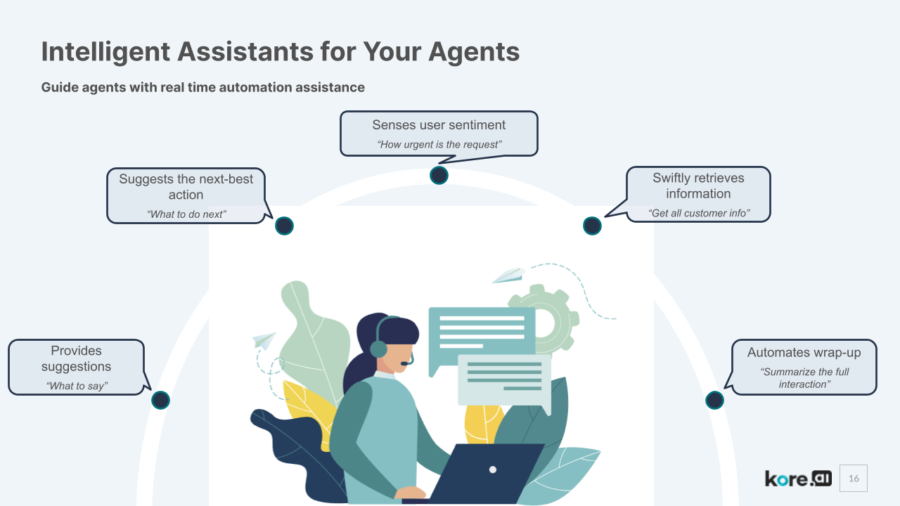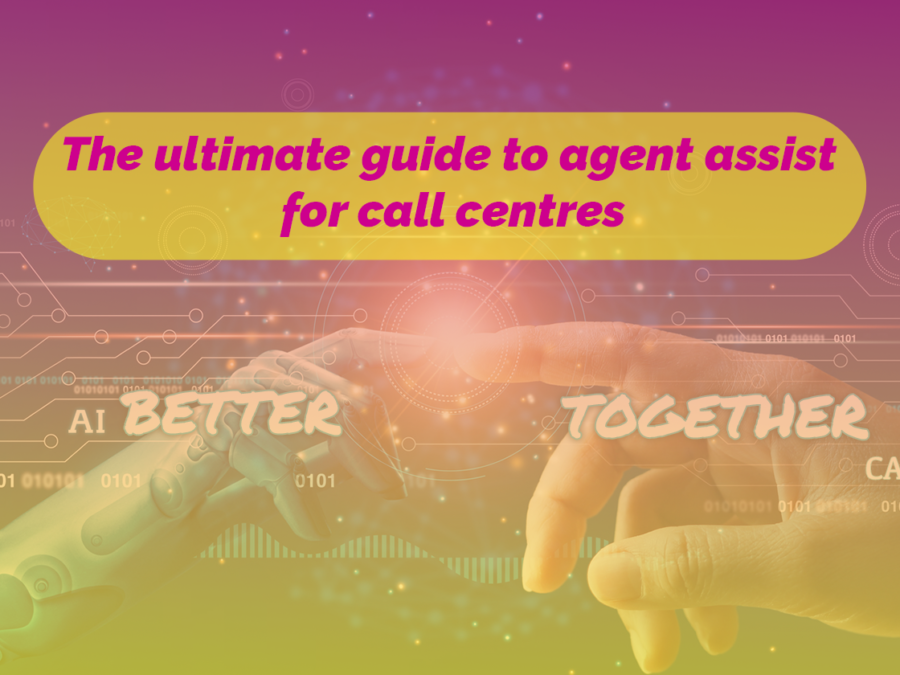Here’s your ultimate guide to agent assist: why it’s needed, what it is and how to implement it to help your call centre agents and customer.
Agent and customer challenges
We’ve all spoken to call centres and felt that our time was being wasted – whether the agent didn’t have the answer, the call took much longer than expected or the issue we called about didn’t get resolved. It can be soooo frustrating.
In fact, a Microsoft study found that 26% of customers were extremely frustrated when an agent didn’t have an answer or ability to resolve an issue. You don’t want to frustrate any customers, let alone a quarter of them.
A separate study by ICMI was even more seismic – it found that 74% of customer service leaders weren’t fully empowering agents to provide best customer service!
Every second a caller is left waiting is a cost for brands. It’s not just wasted time and money in the short term; in the long term, users will attribute those bad experiences to the brand. Nobody wants that.
Of course, brands don’t aim to make customers frustrated, or employ agents who’re purposefully ignorant, with the inability to solve problems. But arming agents with the knowledge and capabilities they need is easier said than done.
Where AI fits in
In the same Kore AI study, the three top business drivers for embracing AI are:
- Better customer experiences (44.9% of respondents)
- Reduced average handling time (19%)
- Improved call deflection (17.9%)
So, how do you make agents more efficient?
That was the main topic for discussion when Raj Koneru, CEO of Kore AI, spoke about Agent Assist in an exclusive webinar with VUX World.
The need for Agent Assist
Kore AI polled customers on what they want from call centres, as you can see in the slide above. The most common needs cited by customers were:
- Quick resolutions (61%)
- 24/7 support (42%)
- Helpful/empathetic agents (33%)

Live agents are the best option in some scenarios – they’re able to come up with creative solutions and they’re empathetic. Those are two things customers need, and bots are not great at.
On the other hand, agents can easily get overwhelmed, and regularly do. Have you ever been in a conversation with a live agent and noticed that they weren’t giving their full attention to you? You responded to their question and then… nothing! The agent was probably wading through piles of information and various systems and unable to spread their attention.
Where agent time is being spent, or wasted
It’s not the agent’s fault though. They have a LOT on their plate. Kore AI researched the tasks agents spend most time on and found that:
- 35% of the time, agents are researching an answer
- 10% of time is spent reaching out to subject matter experts if they can’t find the answer
That’s a lot of time for a customer to sit and wait on the other end of the line. But, at least those are tasks that have a direct impact on customer experience. In other words, agents are trying to find answers to make the customer happy.
However, Kore AI also found that agents spent up to 15% of their time duplicating data from one system to another. What an epic waste of a useful agent time.
15% of time is taken up writing post-call summaries and wrap notes. Summary reports are extremely useful for record-keeping, and in some scenarios they have specific legal requirements, so attention to detail is vital, but perhaps they’re not the best use of the agent’s time.
This means that agents only spend 25% of their time talking with customers after researching answers, escalating to SMEs, duplicating data and writing reports!
This process is ripe for some innovative automation.
The types of Agent Assist solutions
This agent experience doesn’t have to be so inefficient. Many calls are simple to automate. Routine calls like “what time do you open?” is not something that needs the live agent’s analytical powers. It can be automated, so you’d want to let an automated voice assistant on the front-end handle that.
Voice automation is still agent assist
Many companies that implement automated conversations in their IVR think of this as a way of improving customer experience and introducing 24/7 access to information. However, this use case still takes basic and repetitive calls away from agents. Therefore, it’s still assisting agents by allowing them to focus on more complex calls.
If the caller says “I want to cancel my service”, then you wouldn’t want AI to simply carry out the task as requested. You would route this to a live agent because they’re the best option for having retention conversations.
Why ‘next best action’ falls short
Once connected to a live agent, most other agent assist solutions focus on next best action. Helping the agent get access to information, find answers to queries and guide the conversation.
While this does help cut down valuable wasted time, it also misses a huge opportunity. An opportunity for the agent assist AI to actually automate transactions and processes.
How AI agent assist technology can go even further
Picture this; you call your bank, and say ‘I need a new credit card’, and you’re put through to an agent. (Ideally, you’ll already be verified using voice biometrics, but let’s leave that for now.) As you explain your issue, the live agent has an AI assistant also listening to the call.
The assistant suggests to the agent “want me to order a new card?”, the agent clicks “OK”. The assistant returns a confirmation that a new card has been ordered and the agent communicates that with the customer.
In this scenario, the AI assistant is doing all the heavy lifting. It knows the intent, it knows the customer is verified, it has the capability to complete the new credit card order transaction and all the agent has to do is mediate.
They give much more of their attention to the customer – in fact Agent Assist can help so much that agents spend 75% of their time talking with customers. The caller’s time is respected. That’s solid gold in customer service terms.

The business value of agent assist
Imagine how much time this saves. No more clicking between different systems. No more copy and pasting, no more long-winded conversations. A 6 minute conversation could quite easily become a 30 second conversation. Raj explained that one major US bank saved $6 million when Agent Assist shaved 30 seconds off their average handle time.
If you create Agent Assist capabilities that are transactional, you give your agents actual help, not just an information repository. Each agent literally has their own personal assistant to help them do their job better and faster. They become a tag team, where both bot and human can play to their strengths.
This way, the agent is overseeing the assistant’s work, and can step in if anything goes wrong. But, most of the time, the agent is simply having a dialogue with the customer and confirming verbally the actions that the assistant is taking.
Best practice for implementing agent assist
So what’s the best way to implement Agent Assist in a call centre? It’s best to take a two-step approach.
First, before implementing Agent Assist, create an assistant that can handle things like call routing and repetitive FAQs. The ‘low hanging fruit’.
Use this to handle calls up-front in a self-service capacity. Bots and live agents won’t be working in tandem yet, but this is still assisting agents because it’s taking high-volume, repetitive and non-value-adding calls off their plate.
Once that’s up and running, you can go for step two. Start to introduce the transactional use cases so that assistants and live agents work side by side. Transactions that either can be automated on the front-end or that can be automated with some assistance from agents. It’s like you’re building a bot for the front-end, and then using it on the backend too.
Once you’ve done this, you’re in a situation where agents can hand the user back to AI for easier tasks, allowing the agent to focus their time on the next customer waiting in the queue. All customers get what they need, and as quickly as possible. Agents bring their empathy and problem-solving skills, and bots are able to join the dots between humans and data in milliseconds.
You’re then looking at an omni-channel world where conversations between customers and businesses are a true blend of human and AI interactions, seamlessly fused together, with each element playing the role it does best.
You can’t beat that.
To watch the full webinar, you can do that on YouTube, visit Kore.ai for more information on Agent Assist and go straight here to book a free demo.





